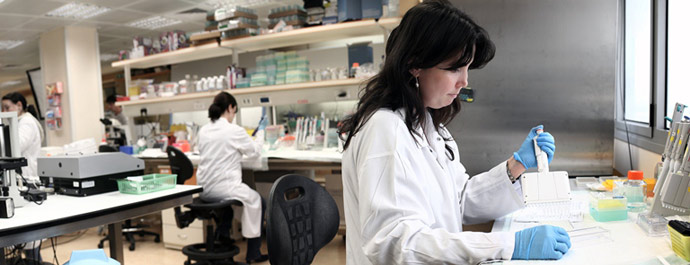Collaboration is one of the primary objectives of many biotech firms attending the annual Biotechnology Industry Organization convention, held this year in Boston. One promising company with that objective is Pluristem, a developer of placenta-based cell therapies based in Haifa, Israel.
The company describes its drug delivery platform, PLX (Placental eXpanded) cells, as releasing a cocktail of therapeutic proteins in response to a variety of local and systemic inflammatory diseases. These cells are grown using Pluristem’s proprietary technology. One of the initial target markets is peripheral artery disease, which affects about 20 million people. Pluristem is also investigating the use of PLX cells in areas including skeletal injuries, pulmonary disorders, autoimmune diseases and central nervous system disorders.
Pluristem’s chairman and CEO, Zami Aberman, and its senior vice president for corporate development, William Prather, came to BIO in Boston last week to seek potential pharmaceutical partners for its product. Last year, the company reached an agreement with United Therapeutics to out-license PLX cells for pulmonary hypertension. The company continues to look for similar deals.
Pluristem is developing its first large-scale manufacturing facility in Haifa, near its headquarters in MATAM Park. Proximity was the sole driver for Pluristem’s location decision. Pluristem currently employs about 100 and plans to add 20 employees when its new facility opens in 2013. The new facility will have the capacity to produce PLX cells for the treatment of over 150,000 patients annually. It will allow Pluristem to meet increased manufacturing capacity requirements as it widens its product candidate portfolio and launches large-scale clinical trials in the U.S. and Europe.
“We chose Haifa for the facility because the idea had been born in Haifa,” Aberman says. “We have to qualify our facility, and we plan to start manufacturing by the end of the first quarter of next year. We already have one deal with a pharmaceutical company and we are looking for additional partners. The beauty of it is companies can produce different products from the placenta.”
Prather says Pluristem 3-dimensional production process is unique in the sector and it allows for increased manufacturing efficiency.
As Pluristem expands on its out-licensing strategy, it plans to gradually build manufacturing facilities around the globe. After the Haifa facility begins production, the company will turn its attention toward a North America facility. Aberman says he has already been approached by the states of New York and Maryland regarding this future project.
“We are analyzing this, but it is on the low burner now,” Aberman says. “So we will start a new facility when we have a product to enter phase three [clinical trials].”
— Zami Aberman, chairman and CEO, Pluristem
Prather says Pluristem’s first partner, United Therapeutics, has facilities in Maryland and North Carolina. He adds that, logically, a second manufacturing facility will be located on the East Coast. Aberman says it is essential for Pluristem to keep its hand on the wheel.
“We have a strategy to control manufacturing,” Aberman says. “All of the ingredients that define the quality are manufacturing issues. We will continue to supply the product to our partners. We will have different facilities around the world, all of them controlled by us. You can compare us to Intel, if you like. They promote the slogan, ‘Intel Inside.’ We promote the slogan, ‘Powered by Pluristem.’ Our cells are the engine of different therapeutics and we want to out-license them to specific pharma partners. We will control our manufacturing secrets and supply the end product to our partners.”
Pluristem’s prospects got a boost in May with the announcement that a 7-year-old girl in Israel, who was suffering from aplastic bone marrow and whose condition was rapidly deteriorating, experienced a reversal of her condition following the intramuscular injection of the company’s PLX cells in a compassion treatment.
